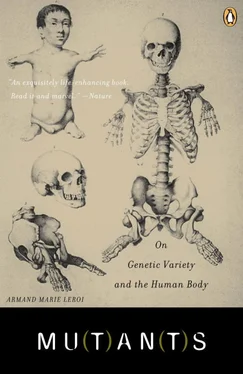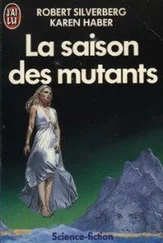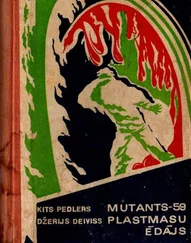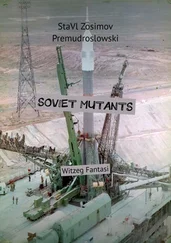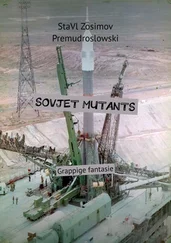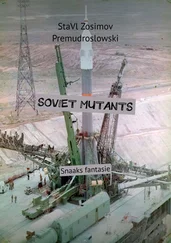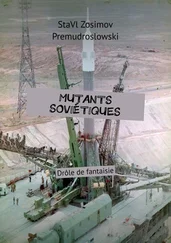And Hoxa6 is present
And Hoxb6 is present
And all other posterior Hox genes are absent
Then a seventh neck vertebra will form: NO RIBS
Should a mutation cripple any one of the genes that encode these five proteins, the seventh vertebra will transform into its neighbour, the eighth vertebra, and gain a pair of ribs.
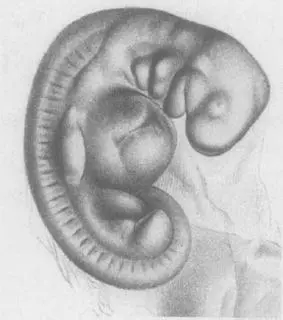
SOMITES IN A HUMAN EMBRYO. FROM FRANZ KEIBEL 1908 NORMENTAFEL ZUR ENTWICKLUNGSGESCHICHTE DES MENSCHEN.
Distinguishing one vertebra from another is merely one instance of a problem that the embryo must solve repeatedly: the differentiation of parts along the head-to-tail axis. The embryo must solve this problem for the neural tube, uniform at first, but which later forms a brain at one end. It must solve it for the bones of the head – so that maxillae are formed next to mandibles and each is attached to its appropriate nerves and muscles. And it must solve this problem for the gut tube that becomes the stomach, liver, pancreas and intestines as well as the ventral blood vessel that becomes the four chambers of the heart. The Hox gene calculator is involved in all this.
How it works in mammals is known from mice in which one or more Hox genes have been deleted. Such mice are often profoundly disordered. Some have fore-limbs that are strangely close to their heads; others are missing parts of their hindbrains or cranial nerves. Some have hernias that cause their intestines to bulge into their thoracic cavities, or else open neural tubes. Some are missing their thymus, thyroid and parathyroid glands and have abnormal hearts and faces; some walk on their toes instead of on the soles of their feet, even as their hindquarters convulse uncontrollably. Most mice in which even one Hox gene has been deleted die young.
The Hox gene calculator is thought to work in humans in much the same way. The evidence for this belief is indirect and comes from a single 1997 study in which a group of London researchers stained six RU486 – ‘morning after pill’ – aborted embryos with molecular probes to reveal the times and place of homeotic gene expression. The embryos were four weeks old, about five millimetres long, and came from unwanted pregnancies. In autoradiographs of the sliced and stained embryos, Hox gene activity appears as grainy streaks and patches of white against the dark outlines of nascent rhombocephalons and pharyngeal arches. The patterns of Hox gene activity are just what one would expect from mice.
This is important and gratifying to know. But the study has not been repeated. Studies on human embryos are rare. In the United Kingdom they can only be done once formidable regulatory hurdles have been cleared; in the United States they can’t be done at all, at least not in federally funded institutions. The autoradiographs that are the raw data of such studies certainly have a disquieting quality about them. Perhaps this is because in death these embryos reveal a property – gene activity – that truly belongs to the living.
Writing of the ‘calculator of fate’ I have emphasised the roles of the thirty-nine Hox genes. But the human genome encodes some three thousand other transcription factors. Like the signalling molecules to which they respond, transcription factors come in families, of which the homeobox genes are only one. These transcription factors are the circuit components, the switches if you will, that are thrown as cells calculate their fate. This computational process is a progressive one in which the earliest cells of the embryo, naive and confronted with a world of possibilities ahead of them, are ever more channelled into becoming one thing rather than another.
Some of these calculations, such as those that go into the vertebrae, are understood; others we are just learning about. In 1904, a Tyrolean innkeeper slaughtered one of the chickens wandering around his yard and found that it had no fewer than seven hearts. A curiosity? Perhaps. But in 2001 it was discovered that if a gene called ?-catenin is deleted in mice, the result is an embryo with a string of extra hearts each of which beats and pumps blood. The extra hearts are made from tissue normally destined for the guts; and so a small part of another calculation – the one that decides whether a naive cell in the embryo becomes endoderm or mesoderm – stands revealed. Other disorders suggest the existence of calculations about which we know nothing. There is, it seems, a row of obscure glands in our eyelids (the Meibomian glands) that sometimes, albeit rarely, tranform into hair follicles. Infants who have lost their Meibomian glands have, instead, two or even three rows of eyelashes on each lid. It’s a trait that runs in families, but the gene responsible for directing eyelid epidermis into a gland rather than a hair follicle has not yet been found (and one doubts that anyone is looking).
And then there is Disorganisation. A mouse mutant of unparalleled obscurity – it has been the subject of only three papers – it is also one of the strangest. Three properties make Disorganisation strange. The first is the pervasiveness of its effects upon the mice that carry it. It would be gratuitously macabre to detail the appearance of these mutant mice: it is enough to say that the deformities of a single litter would embrace the contents of a sizeable teratology museum. And yet, the mutation is not inevitably lethal. Disorganisation’s second strange property is that no two mutant mice have the same set of defects. Some are hardly afflicted at all and can survive and breed, others are born mutilated but alive, yet others die in the womb. This variability extends to within a given mouse: a left kidney (or lung, or leg) may be destroyed even as its right cognate remains untouched. Finally, there is the strange propensity of the mutant mice to generate extra parts, not only supernumerary limbs (which can appear almost anywhere on the body), but also extra internal organs such as livers, spleens and intestines. They also have odd tumor-like structures embedded in their musculature and skin that seem to be the remains of supernumerary organs which never made it all the way. Is there a human Disorganisation gene? No human family showing Disorganisation-like properties seems to be known. However, some clinical geneticists have pointed to infants with especially bizarre suites of congenital anomalies as possible carriers of a cognate mutation. One such infant, a boy born in 1989, had nine toes on one foot and tumor-like pads of tissue scattered around his body. He also had a finger, complete with fingernail, growing from the right side of his ribcage. The Disorganisation gene has not yet been found, though it surely will be soon. Meanwhile, the mice speak. They tell of some critical, global, and quite unknown component of the embryo’s calculator of fate, one that has gone utterly awry.
The power of the homeotic genes over the number and kinds of body parts has led some scientists to propose that they must be important in evolution; that they have somehow, worms to whales, provided animals with their staggering variety of forms. There may be something to this. People with extra ribs, specifically those who have extra ribs located on what should be their necks, are, for example, a bit like snakes. Snakes don’t have necks at all: they have rib-bearing vertebrae that run all the way to their heads. This is because the pattern of Hox gene activity in the somites of snake embryos is quite different from that of necked reptiles, birds and mammals – a difference that also explains, incidentally, why snakes don’t have arms. The position of arms, more generally fore-limbs, is dictated by the same Hox gene calculation that decides the allocation of vertebrae between neck and ribcage. No neck, no arms; it is as simple as that.
Читать дальше
